Table of Contents:
- What Does it Mean to “Leave No Trace?”
- Why is Leaving No Trace Important?
- How to Follow the 7 Leave No Trace Principles During Your Adventure Elopement
- How to Have an Environmentally Friendly Elopement
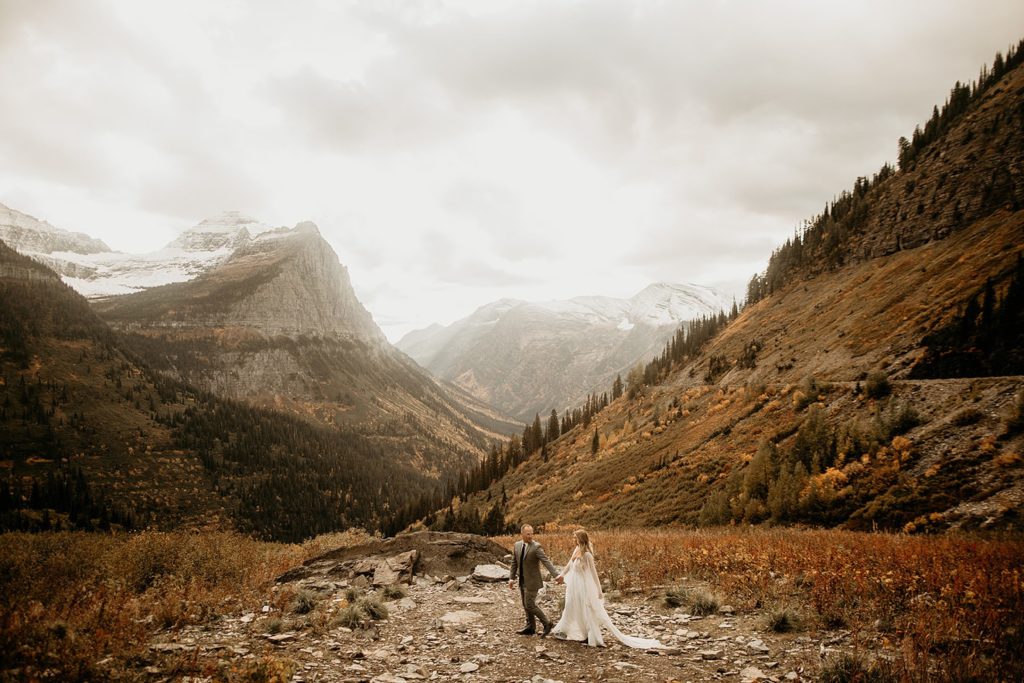
If you’re having an outdoor adventure elopement, I want to encourage you to be dedicated to keeping the environment just as beautiful as you found it, and leaving it in pristine condition for every future visitor. That’s why I’ve created this guide to having a Leave No Trace elopement. It’s got a bunch of practical tips on how you can protect the environment with your elopement + minimize your impact! Ready to learn so much good stuff??
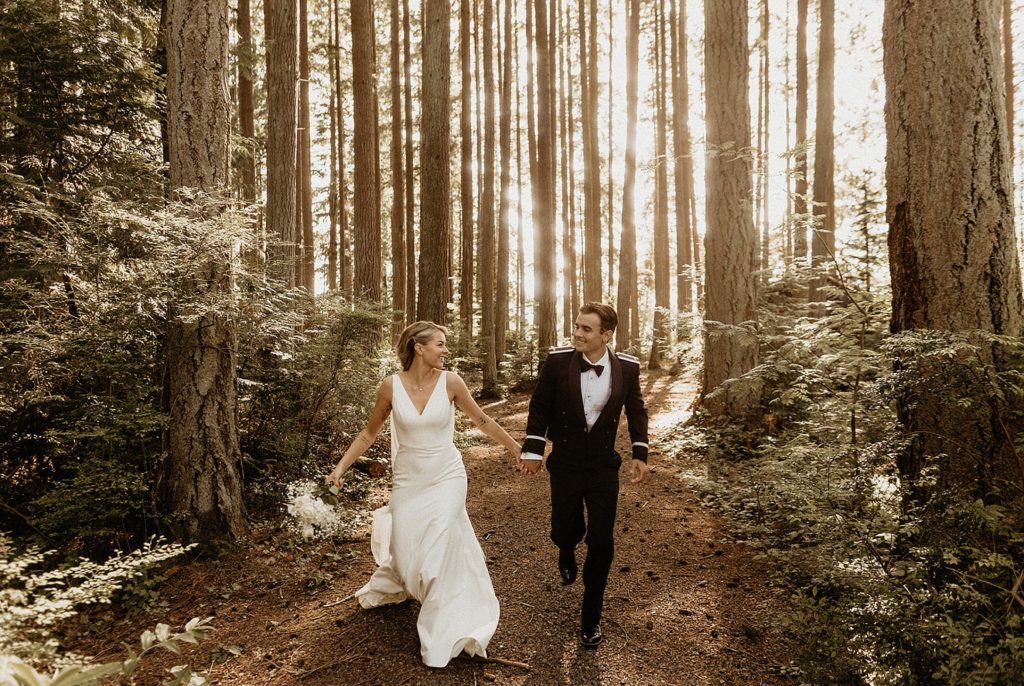
What Does it Mean to “Leave No Trace?”
“Leave No Trace” is an organization dedicated to educating people on how to minimize their impact on the outdoors when spending time in nature. They want to help you explore the outdoors sustainably and gain knowledge about how to keep yourself safe in the outdoors. As well as protecting the beautiful environment that you’re visiting! Leave No Trace offers TONS of educational resources on their website.
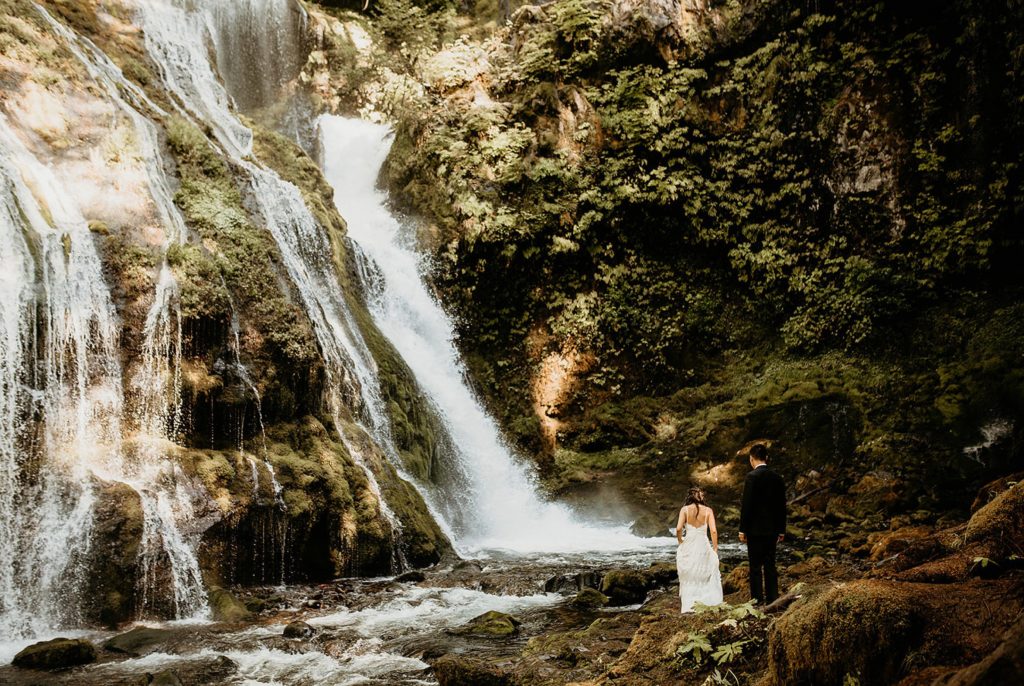
Plus they provide so much amazing info to the general public so we can keep the environment beautiful for years to come. I’ll be focusing this blog post on the 7 LNT Principles they provide to make it simple + easy for you to hold your outdoor adventure elopement in a safe, sustainable way!
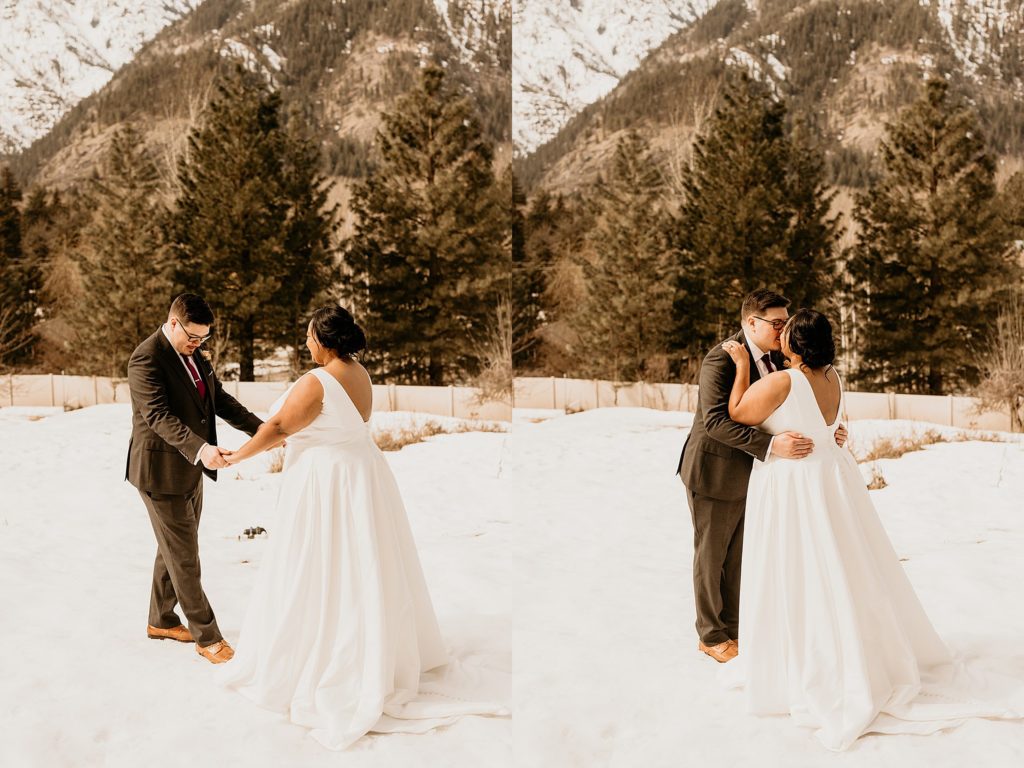
Why is Leaving No Trace Important?
Leaving No Trace is the only way we can make sure the outdoors stays accessible & beautiful for YEARS to come, and for every future visitor. If we’re careless with our time out in nature, it can have detrimental effects to the land and wildlife around us. Which will get in the way of future visitors enjoying the beautiful landscapes as much as we did. This is super important to keep in mind if you’re having an adventure elopement. Too often I see couples (and photographers/other elopement vendors) being ignorant to the impact they’re having on the environment, and causing unnecessary land damage just for the sake of getting a good photo.
We want adventure elopements to be a thing of the future, not just of the past. This means we need to make sure we care for the land and leave it as beautiful as we found it so people can continue to enjoy it in the future!
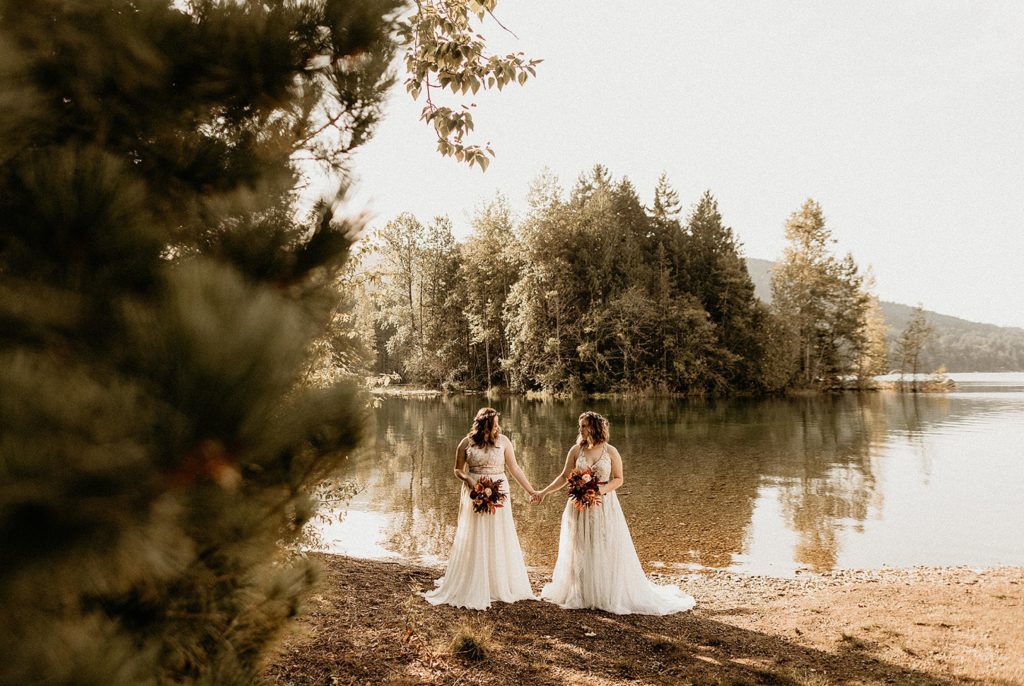
How to Follow the 7 Leave No Trace Principles During Your Adventure Elopement
1. Plan Ahead & Prepare
The first principle is all about making sure you & your guests stay safe during your time in the outdoors. Plus having a great elopement without having to worry about safety issues or unpredictable circumstances! It encourages you to plan in advance so you go into your elopement fully prepared, and to learn about the location you’re visiting so you’re aware of what is & isn’t allowed. This is an important principle because oftentimes if plans go south when you’re outdoors, you may forget the importance of taking care of the land and might put you/your guests/the nature around you at risk!!
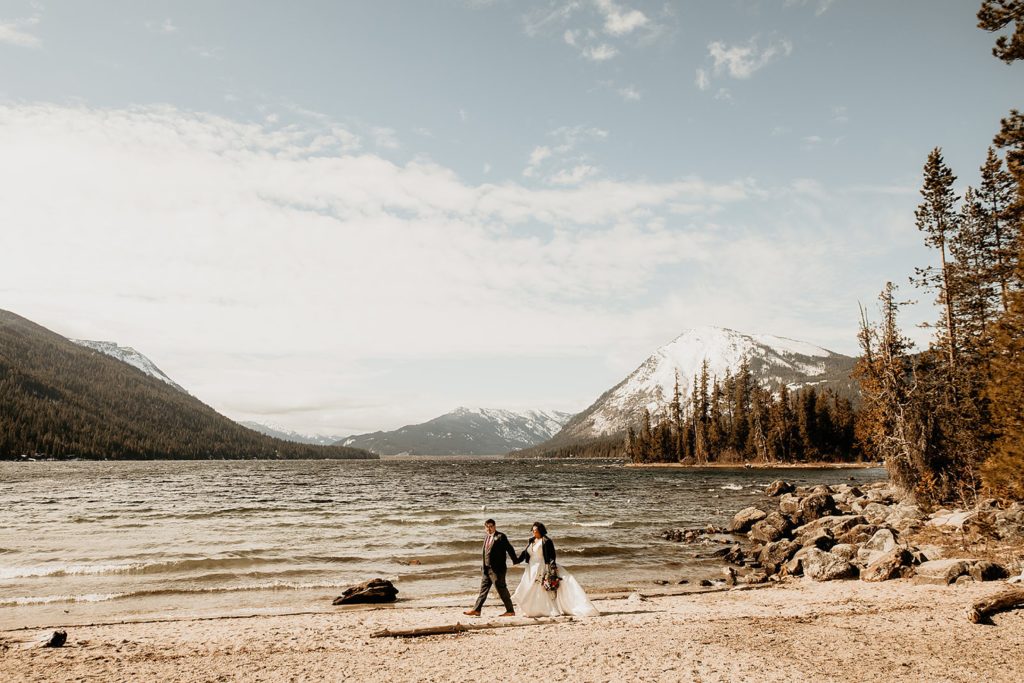
Practical ways to do this at your elopement:
- Make backup plans in advance: Don’t let weather or other unpredictable circumstances force you to break Leave No Trace principles. By having backup plans in place, especially backup locations, you won’t be forced to make a last-minute decision on the day of your elopement if your original plans fall through. These last-minute decisions might cause you to want to break the LNT principles. Either by trespassing on blocked-off land or using off-trail locations because you’re stressed & don’t know what else to do!
- Prepare for potential bad weather: Preparing in advance for the possibility of bad weather is really important in making sure you follow LNT principles. Use permitted locations, as well as ensuring the safety of you & your guests. Being hit with bad weather and being unprepared for it may cause you to panic and forget about taking care of the land you’re on or switching to a restricted location.
- Pack the right equipment: Make sure you pack the right equipment that’ll keep you safe and comfortable in the outdoors, including appropriate clothes, shoes, hiking gear, water, food, etc.!
- Know your limits: it’s important to know the limits of you & your guests and any restrictions you have, so that you can plan a hike/location that will work for all of you.
- Know the rules: get familiar with the rules of the location you’re visiting, including any group size limits or restrictions for wedding ceremonies (e.g. confetti is prohibited because it can damage the land if you don’t clean it up)!
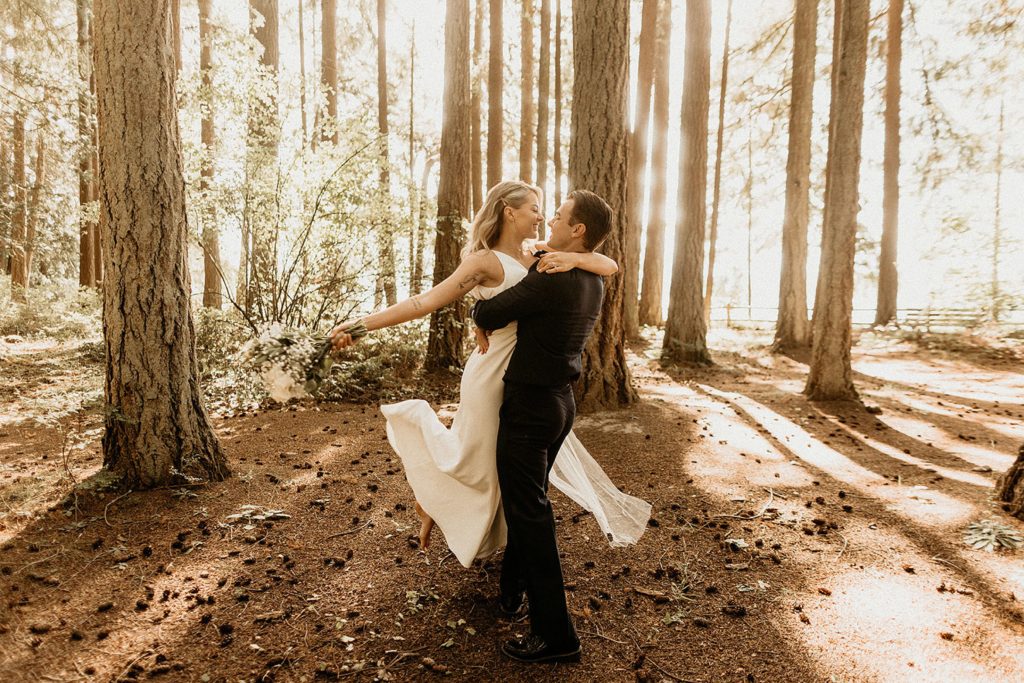
2. Travel & Camp on Durable Surfaces
This principle is focused around keeping land damage minimal, and not letting your elopement/visit to the outdoors cause soil erosion, damage to vegetation and wildlife, and the development of undesirable trails. It’s set in place to teach you how to move through natural areas carefully and avoid damaging the environment by only using designated trails, campsites, & other backcountry routes!
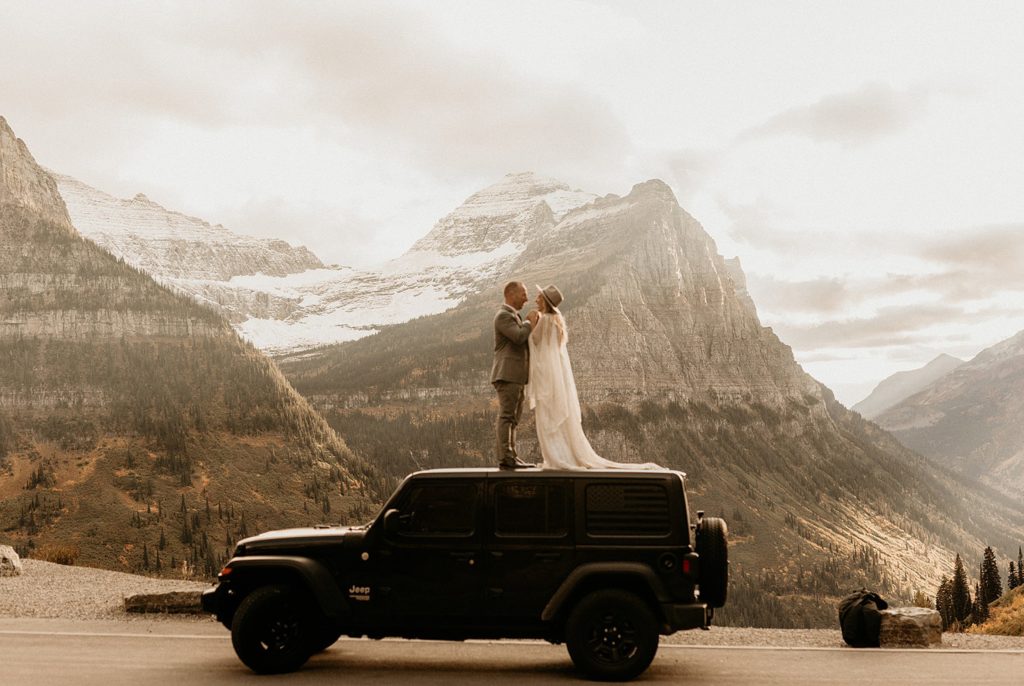
Practical ways to do this at your elopement:
- Only walk & take photos on trails: This is an obvious one, I hope!! Protect the land you’re on by only walking, taking photos, & holding your ceremony on designated trails. I see so many couples and photographers veering off-trail to get “the shot” or “those views” but I promise you can get just as amazing views via permitted trails if you just look a little harder! Once one couple does it, other couples will see it on social media and think it’s okay for them to do, too – it’s the classic example of the butterfly effect. You may have to search more and take a longer route to get to the views, but the land damage you’re avoiding is worth it.
- Find a permitted campsite: If you’re camping during your elopement, make sure you find an actual campsite and don’t just pop up your tent anywhere in the woods that you want to. There are designated campsites for a reason, sometimes ones that even have restrooms and showers! These sites are here for visitors to use rather than damaging land in the middle of a forest that’s not intended for human use. Camping on undesignated sites can cause soil erosion and can damage the vegetation & wildlife that lives there!
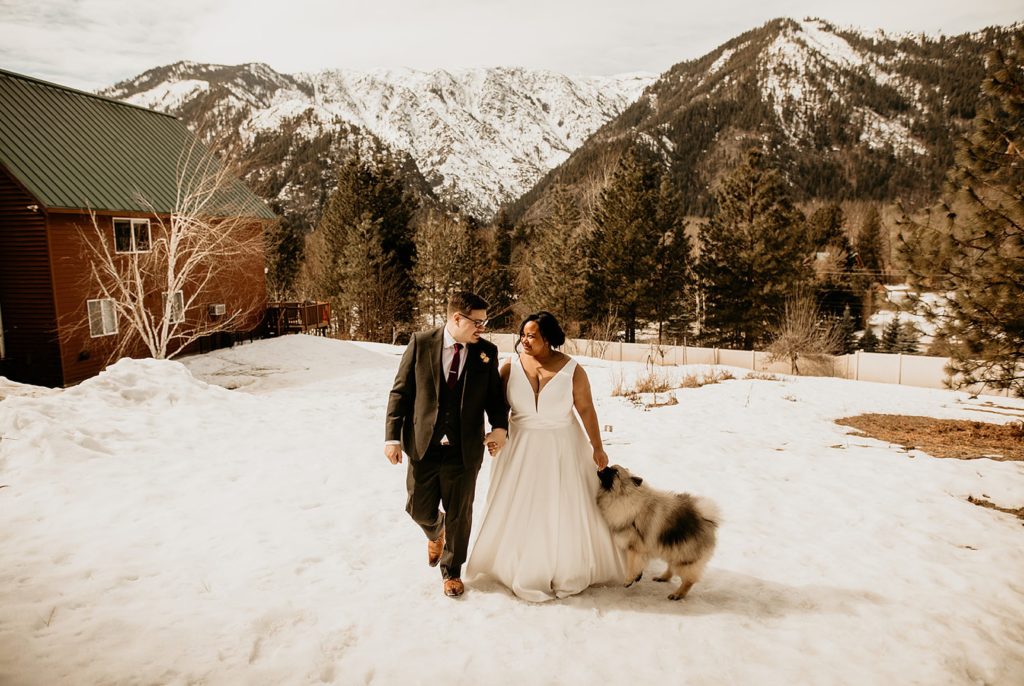
3. Dispose of Waste Properly
Ever heard of the mantra “Pack it in, Pack it out?” It’s a saying commonly used among seasoned hikers and people who visit the outdoors often, basically meaning to clean up whatever you bring and leave the sites you visit as clean (or cleaner) than you found them. This applies to human waste, dog waste, and just plain trash created by your ceremony, your campsite, cooking/meals, etc.
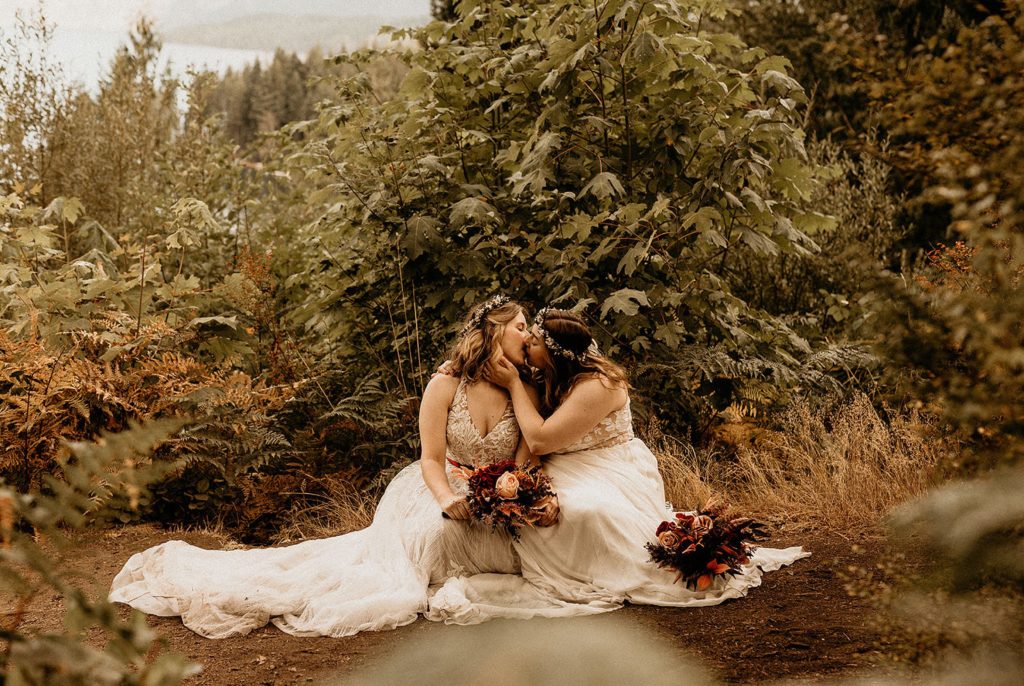
Practical ways to do this at your elopement:
- Pack trash bags: Bring a few trash bags along on your hike so that you can clean up after your ceremony/photos. Easy peasy.
- Clean up after your dogs: If you’re bringing your dog(s) along to your elopement (assuming dogs are allowed at your location/on the trails you’ll be taking), please please be a decent human and make sure to clean up after them! You can do this easily by carrying poop bags around with you (attach a portable set of bags to your backpack or even your dog’s leash) – bonus points if they’re biodegradable bags too! It helps to bring another bag to put those bags in so you can carry them around until you find a trash can and avoid the bad smell.
- Prepare for how you’ll dispose of human waste: You can read this article to learn about the multiple methods of disposing of YOUR waste, including digging cat holes, using latrines, bringing toilet paper/tampons, and where to go to the bathroom to cause the least damage to vegetation.
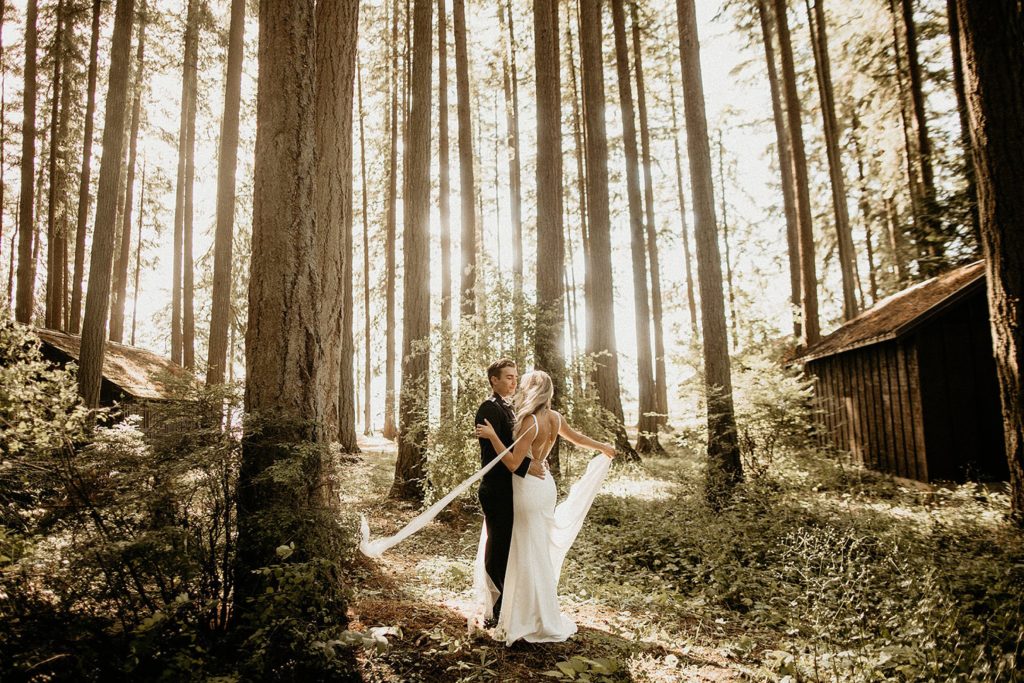
4. Leave What You Find
This is an easy one to follow – just don’t take anything that’s not yours! This includes rocks, flowers, shells, plants, leaves, wood, or other natural & cultural objects. It’s simple: these belong to the natural area you’re visiting, not to you, so it’s best to leave them where they were. I know how tempting it is to take that pretty rock you found or to pick a few flowers, but it’s not worth the damage it could cause to the ecosystem! Respect the natural area as if it were somebody else’s home you walked into, because really, it is – the home of the wildlife and vegetation native to it.
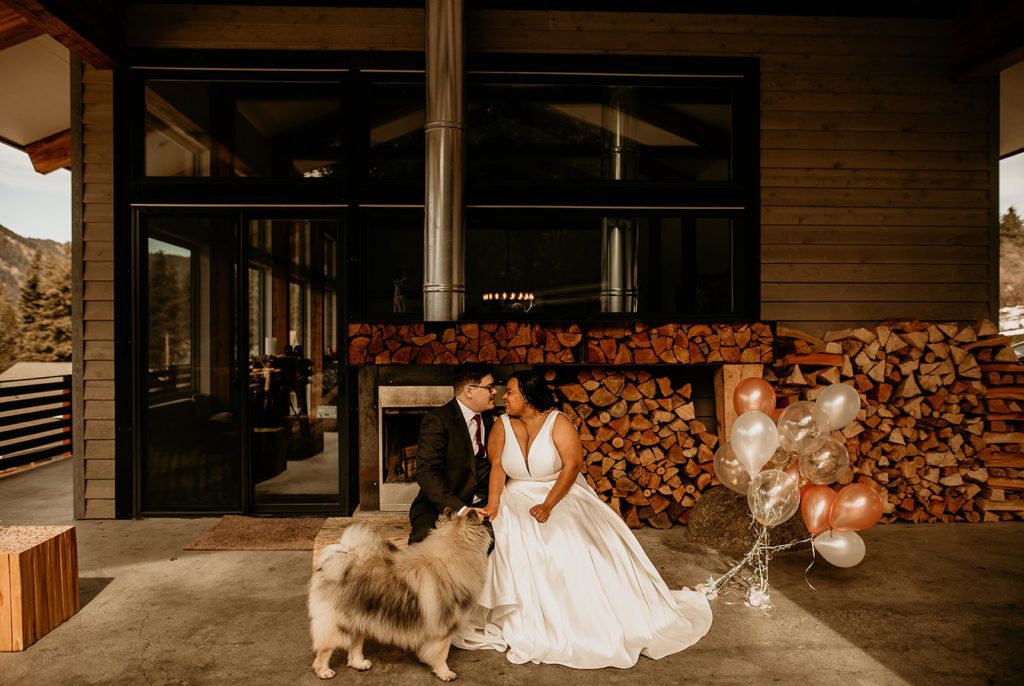
Practical ways to do this at your elopement:
- Don’t take any “souvenirs”: I know that getting married in a certain location in the beautiful outdoors will make that location really special to you from now on. You might want to bring along a souvenir to remember it by. But please avoid taking anything (listed above) from the natural area. Buy souvenirs from a nearby local shop or park visitor center instead!
- Leave fire rings that you use: If you use any designated fire rings during your elopement, leave them where they were when you leave the site. Don’t dismantle them! This is because dismantling them will cause them to have to be rebuilt with new rocks, which will impact the area further.
- Don’t hang signs on or carve anything into trees: Please don’t hang any type of signage on trees. Don’t carve anything into them either! Outdoor elopements are best when they’re kept simple because you don’t need to put signs anywhere or hang floral installations. Hammering a nail into a tree just to hang something for your brief elopement will damage the tree, and so will any type of carving (e.g. carving your initials).
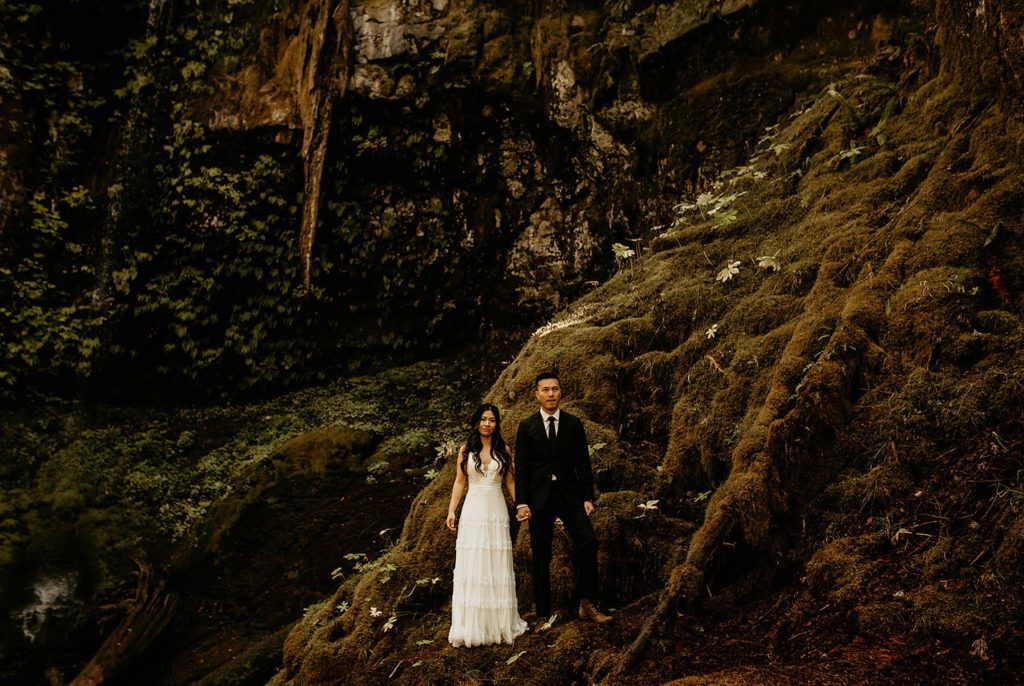
5. Minimize Campfire Impacts
What the name says! This principle is focused on minimizing the impacts of campfires. This is really important for outdoor adventure elopements where many couples want to sit around a campfire in the evening with their guests and enjoy a meal, s’mores, & drinks. Campfires have a lot of potential for land & environmental damage. It’s important to learn how to avoid that when building a campfire.

Practical ways to do this at your elopement:
- Bring a portable stove: Using a stove for cooking instead of a campfire is a really great & easy way to minimize your campfire impact! Instead of relying on a solid campfire to do your cooking, bring a portable stove so you don’t have to use up a ton of firewood and keep a campfire going for a long time.
- Pay attention to fire danger: Especially if you’re eloping somewhere where it gets really hot & dry. Look at what the fire danger levels are like at the time of your elopement. Don’t set up a campfire if the danger is very high, or fires are prohibited at the time. The smallest spark can cause the biggest disaster, so better safe than sorry!
- Only take wood if there’s plenty of it available: Taking too much wood from a forest is a big problem when it comes to camping & campfires. Only take firewood if there is plenty available and if removing wood wouldn’t be noticeable to the land around you. It’s best to purchase firewood somewhere in advance so you can leave the wood where it’s at by your campsite!
- Learn how to build a safe fire in advance: If you arrive at your campsite and only start learning how to build a campfire then, it’s likely you won’t be as efficient or effective with your fire-building as you could be. Do some research in advance by watching Youtube videos or even just reading articles on Google to help you learn how to do it safely before the time comes to actually do it!
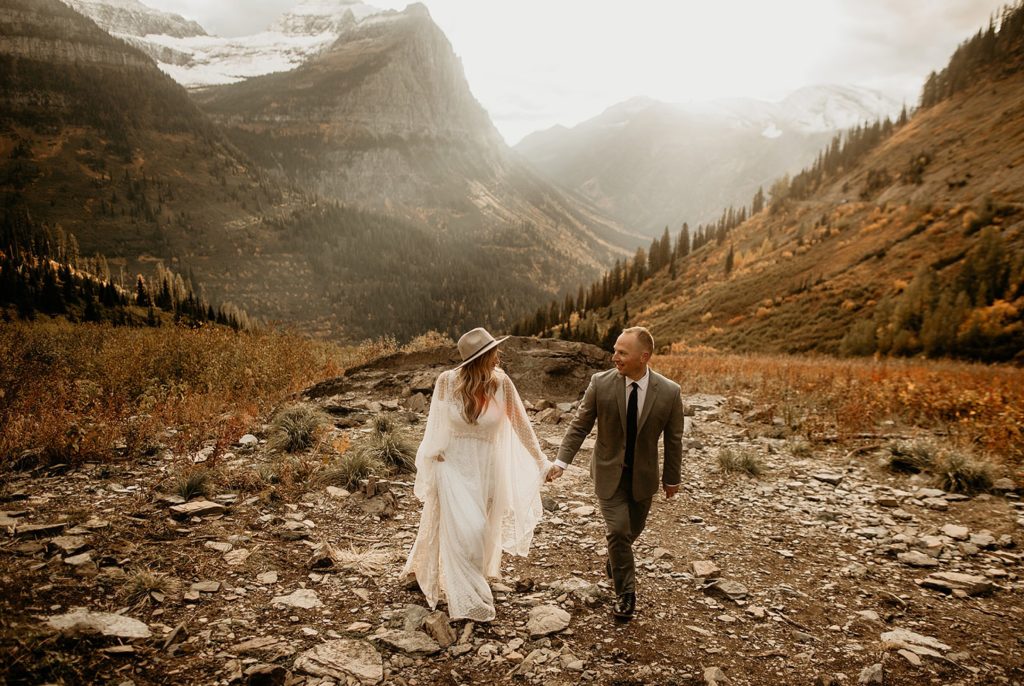
6. Respect Wildlife
Respecting and protecting wildlife is one of the major ways we can minimize our damage to the outdoor environments we visit. Remember that we’re entering the home of the wildlife (both animals & plants), so it’s our job to respect it and keep it clean & safe for the native wildlife that lives there!
Practical ways to do this at your elopement:
- Avoid loud music/noises: Don’t play loud music or use any sort of air horns/objects that make loud noises at your elopement. These will scare nearby animals and might force them to flee, even though it’s their home you’re entering.
- Don’t disturb any animals you find: Just leave them be! You may run into animals out in the wilderness. If you do, observe them from a distance and respect their space + their home.
- Divide into smaller groups: Large groups can scare wildlife much easier. If you can, divide into smaller groups on your hike to avoid scaring off animals by entering their home all at once.

7. Be Considerate of Others
Finally, similar to the principle above, be considerate and respectful of other visitors around you. You’re not the only ones enjoying the outdoors. There are other people who want to experience the beautiful land and views too! So do your best to be courteous to other visitors, and hopefully they’ll show you the same respect. Especially if you’re getting married and holding a ceremony in a public location. You don’t want to take away from their experience, just as they hopefully don’t want to take away from your special day.
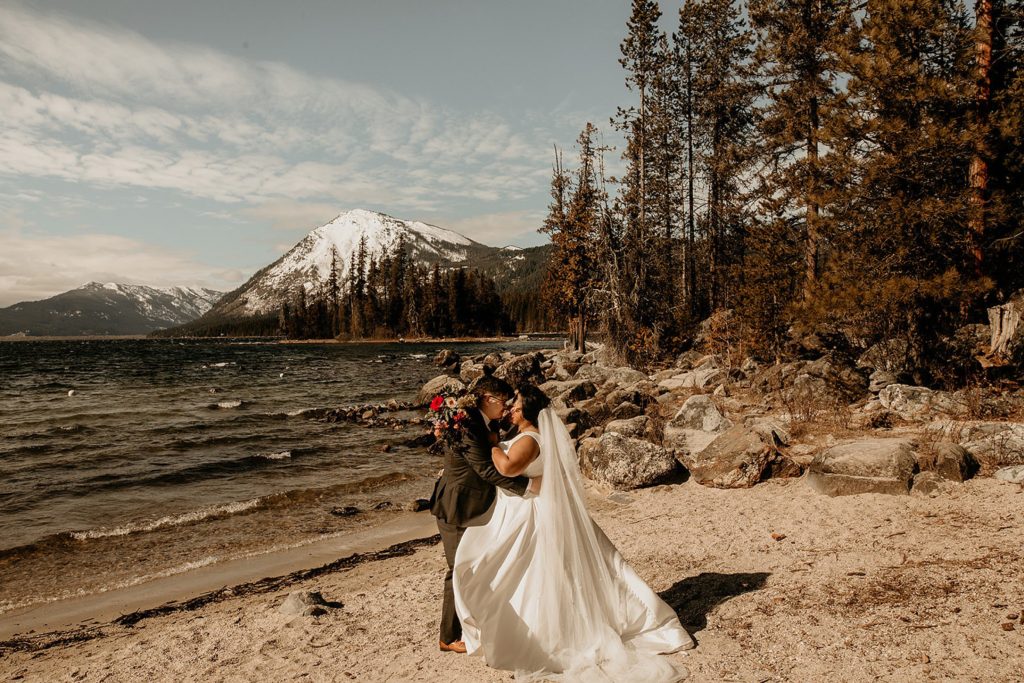
Practical ways to do this at your elopement:
- Avoid loud music/noises: For the same reason as above. Loud music and excessive noise can bother other visitors and disrupt their outdoor experience!
- Don’t block off any public spaces: Yes, you’re getting married, but that doesn’t mean that the other visitors’ experiences don’t matter! Don’t block off any public spaces/areas with ropes, chairs, tables, etc., because you’re not the only ones who want to enjoy the nature around you. If you want to have a more private elopement, find a designated ceremony spot that isn’t available to the public at all times.
- Control your pets: If your dogs don’t know how to behave, they may run up to or bark at strangers, disturbing their experience! Picking up your dogs’ waste is also a way to respect others around you so they don’t have to step in it or smell it when they walk by.
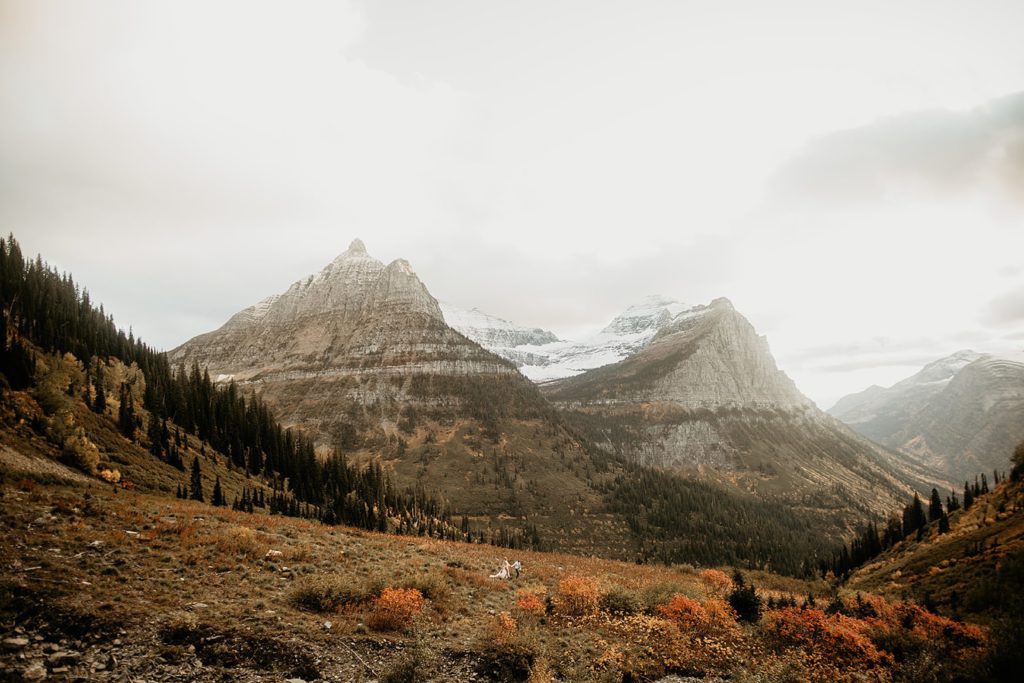
How to Have an Environmentally-Friendly Elopement
You did it! You’ve now familiarized yourself with the 7 Leave No Trace Principles that are put in place to help you minimize your impact on the outdoors with your adventure elopement.
If you want to further learn about how to have an elopement that respects the outdoors & keeps sustainability in mind. Head to my guide to Planning an Environmentally-Friendly Elopement!
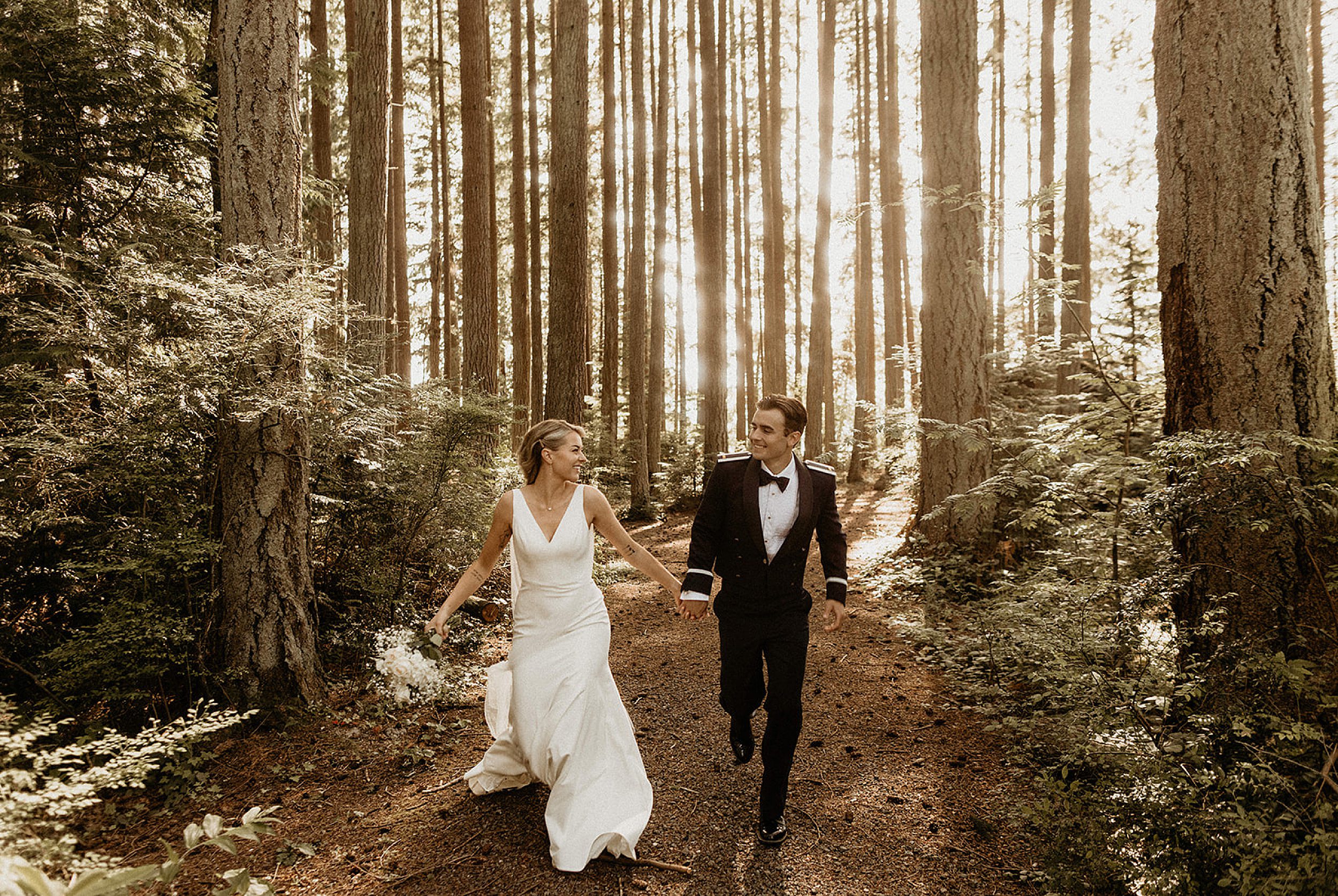
omg this is such a great resource for couples! I love all of these suggestions! This is such an important subject!
I really appreciate this article! I found it super helpful as I am planning my elopement rn and I have been looking for ways to be more sustainable!
[…] elopement if you’re eloping in the outdoors. Please take the time to read my blog post on How to Have a Leave No Trace Elopement to learn about the 7 LNT principles, and how to respect + protect the beautiful land you use for […]
[…] I’m super duper passionate about Leaving No Trace when I’m out in nature, and helping my couples do the same thing. “Leave No Trace” basically means you do everything in your power to minimize your impact on the land you’re visiting in order to keep it protected + beautiful. If you’ll be hiking to get to a waterfall for your elopement, please make sure to familiarize yourself with the 7 Leave No Trace Principles – which I wrote a whole blog post about! […]
[…] During their ceremony, we made sure to follow leave no trace principles! Here’s a blog post about how to follow LNT during your elopement! […]
[…] How to Have a Leave No Trace Elopement | The 7 LNT Principles […]
[…] How to Have a Leave No Trace Elopement | The 7 LNT Principles […]
[…] whether you’re in the desert, the mountains, the forest, etc. I recommend reading this guide to How to Have a Leave No Trace Elopement to help you get a good understanding of what LNT is and why it’s important to practice it any […]
[…] Protect the canyons, salt flats, sand dunes, & rolling hills by following the Leave No Trace Principles (learn more about them here!!). […]